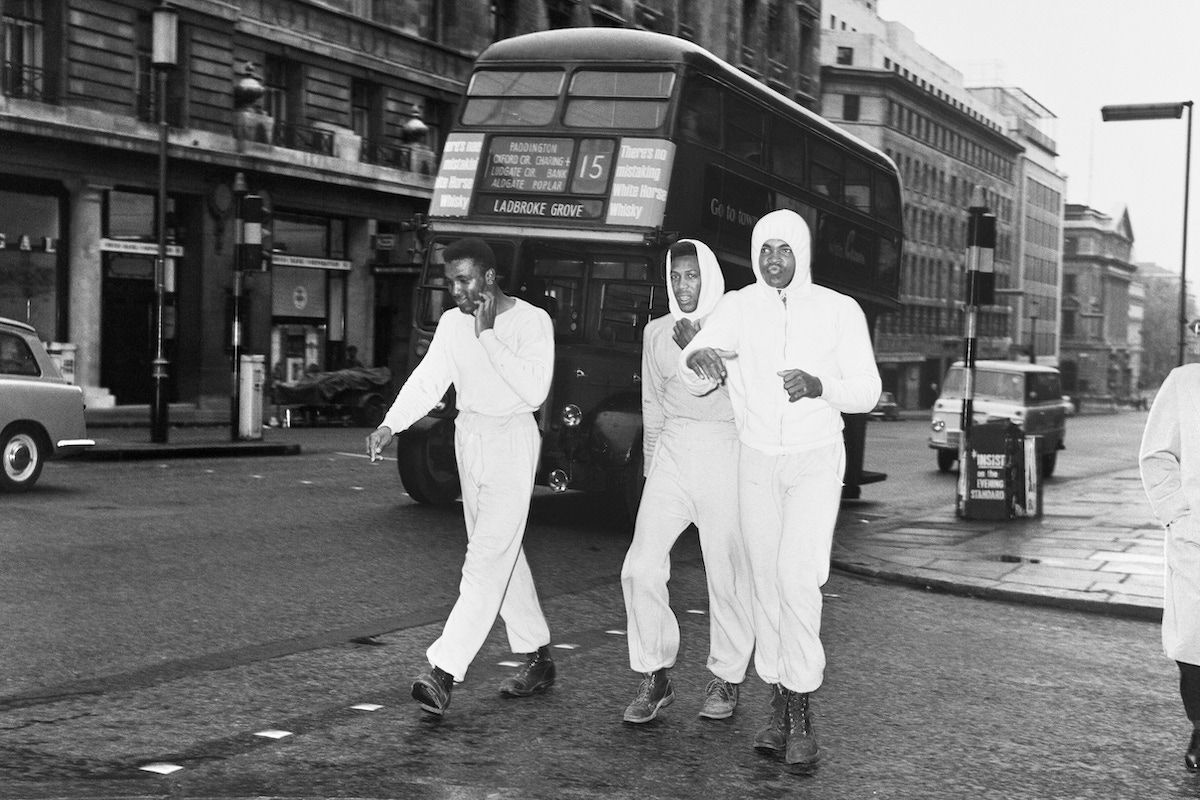FOREVER YOUNG?
If the wheels of time cannot be slowed (much less stopped), how do we come to terms with the ageing process? The Rake consulted medical professionals and the shrewdest members of our social circle to build our best cheat code. But here’s a clue: it pays to grow old mindfully as well as gracefully, writes Nick Scott.

“No one loathed the idea of getting old more than Dorian, so he wanted to experience everything, constantly reflecting on questions of morality and sin. His biggest wish was that his portrait would age instead of himself.”
The stories humans tell each other reflect our fears as profoundly as our hopes, so it is no surprise that Oscar Wilde’s 1890 Gothic work — his only novel — is but one literary treatise among countless whose core theme is the tormenting brevity of being young. Myths akin to the ‘Fountain of Youth’ idea have sprung up, independently, in different cultures the world over since the birth of storytelling. From Gilgamesh’s fruitless quest for immortality to Peter Pan and Benjamin Button via Faust’s used-car-lot-esque deal with Mephistopheles, fiction tells us that resistance to the onset of age is omnipresent in human history. Ageing clearly remains an existential albatross around our necks. The global anti-ageing market was estimated to be worth about $58.5bn last year — and at least those serums, ointments and unguents make underwear-loosening romantic gifts, unlike the macabre clinical instruments relating to the storage of the deceased in sub-zero temperatures in the hope of reanimation in years, decades or centuries to come (an industry that is estimated to be worth $17.1bn by 2025). So how, here in 2021, are rational, au courant people embracing the inevitable? Is resistance futile? Shouldn’t one instead clasp time’s arrow with both hands and enjoy the ride, rather than taking it in the underbelly?
While David Gandy, at the age of 41, can scarcely be called middle-aged in these times of elongated longevity (life expectancy has tripled in the past 250 years), the model and entrepreneur is sanguine about the effects of ageing. “I suppose I do notice that more and more people have moved on from saying, ‘Wow, what a great picture’ to comments on social media along the lines of, ‘You’re still handsome’, or, ‘You age really well’,” he tells The Rake, laughing. “I’ve never really taken to worrying — and this sounds weird as a model — about my appearance, though. What you see is what you get. And I think I’ve done pretty much everything I can in terms of training and eating well and not smoking to preserve skin and hair and everything else. The only thing that hasn’t been ideal is, I’m a terrible sleeper and I’ve been travelling the world working and have basically been jet-lagged for 20 years. Sleep is one of the most essential elements for well-being, but there’s not much I can do about that one.”
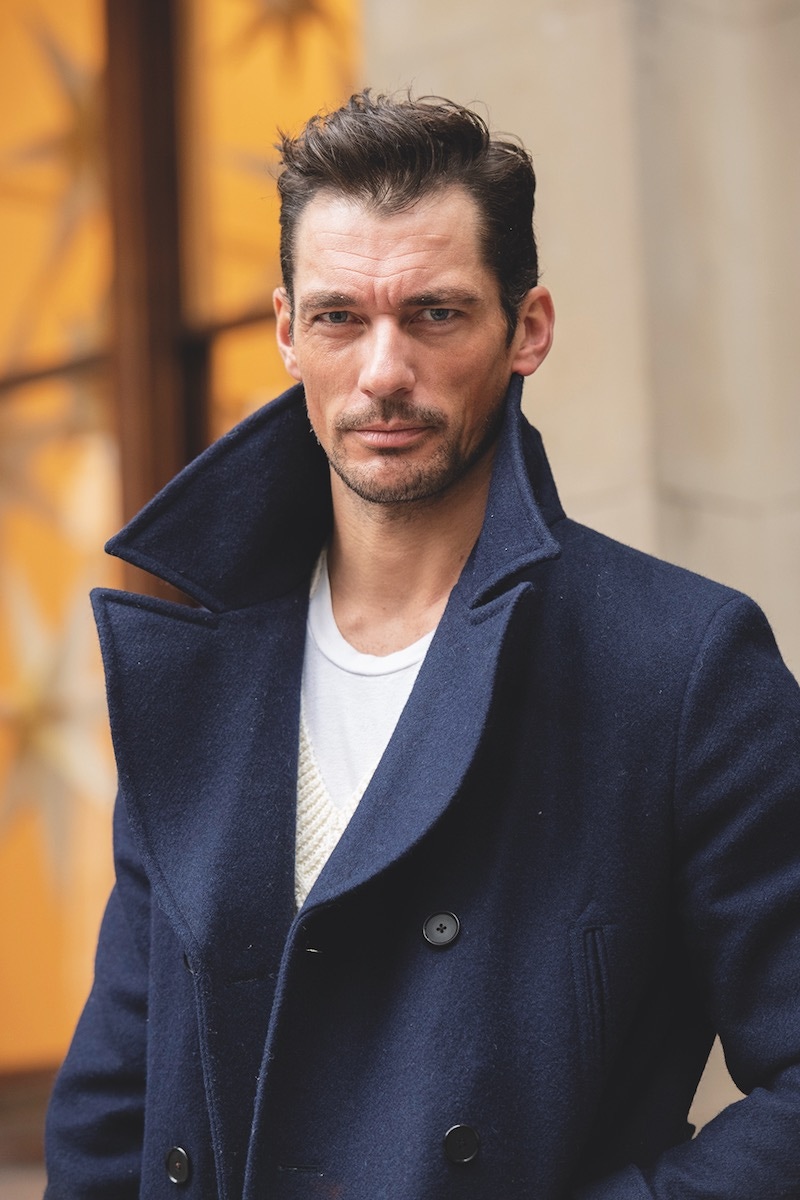
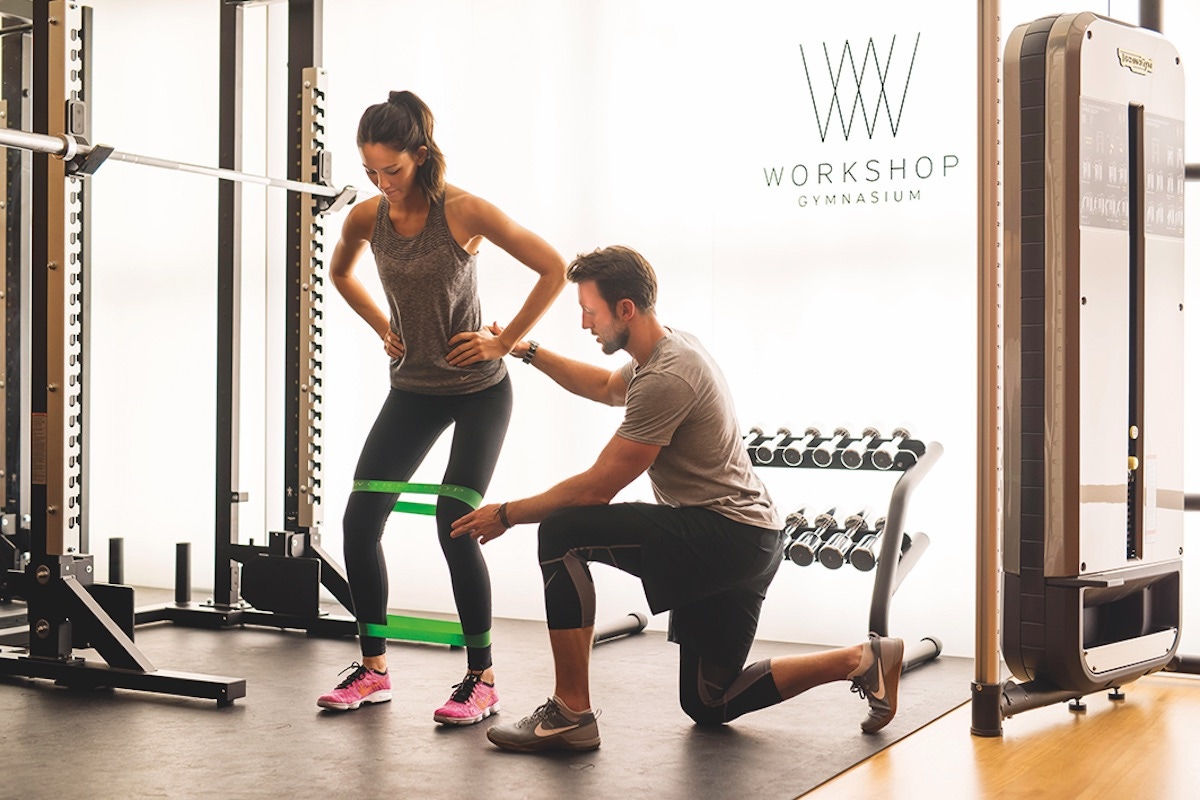
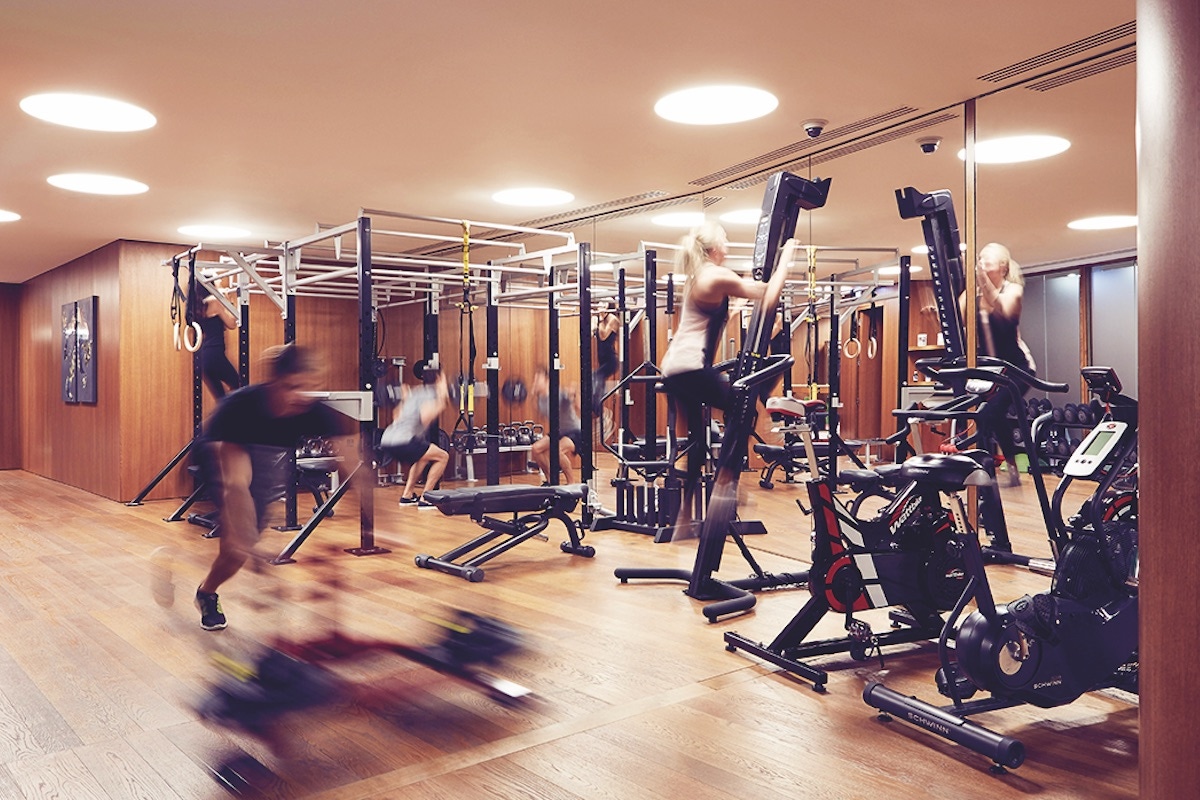
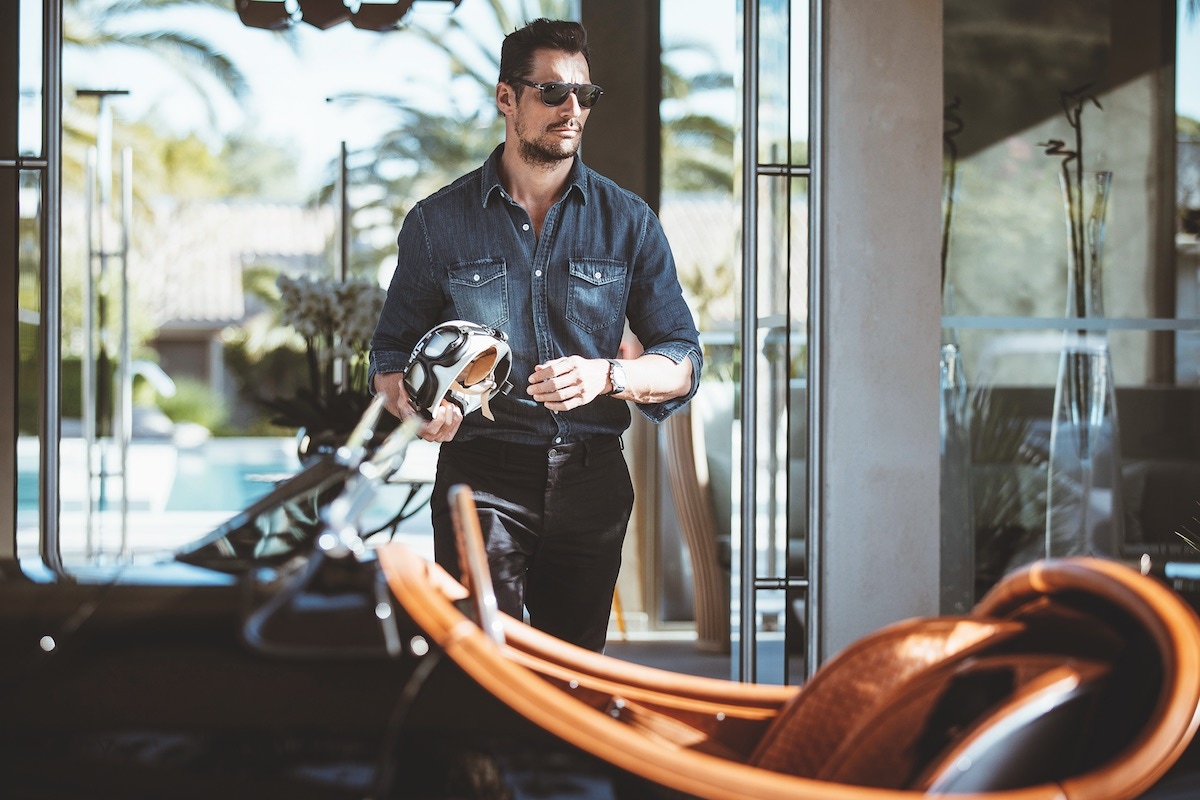
Many readers of The Rake, especially those over 40, will face the same conundrum with time zones and fuselage conditions for the foreseeable, once normality returns, but the good news is research has found that, even among those inactive in early adulthood, increasing activity after 40 is better for well-being and longevity than being a gym bunny during your youth before letting indolence reign at the first sign of a mid-thirties Homer Simpson paunch. Those motivated by such research can take heed of, and solace from, Gandy’s extensive experience of staying trim.
“When it comes to training, at 25, even 30, you very much think you’re invincible,” he says. “I’ve been training five days a week at the gym longer than I’ve been modelling. And in the end you realise that you have to adapt it to your [changing] body. Whereas before if I had a shoot coming up I could pretty much do three weeks of intensive training and more cardio and almost transform my body into fitness shape, now that takes a lot longer. And you’ve got to make sure you warm up and warm down and stretch and look at stuff like Pilates and yoga at this age, while at 25 you don’t worry about any of that whatsoever.”
What of the crushing dietary compromise that makes so many of us balk at the phrase ‘healthy lifestyle’? “Watching what I eat has never taken over my life,” says Gandy, who rose to prominence with ads for Dolce & Gabbana’s Light Blue fragrance. “I won’t ever not eat something someone puts in front of me; I enjoy life and enjoy a drink. People always have that stereotypical view, ‘You’re a model, you don’t eat’ — well, I’m 14-and-a-half stone, and if I don’t eat I basically shrink. I have to consume between 3,000 and 4,000 calories a day just to maintain the size I am.”
In essence, Gandy’s advice to 40-plus convertees to health and fitness is to relish the process of getting into shape: “I always say to people, ‘You should enjoy training; if you’re not, adapt it’. It’s hard to convince yourself to go to the gym if you’re not enjoying it and not seeing results.” It’s certainly worked for him: “I’m in better shape now than I was in 2006, when I shot the Dolce & Gabbana campaign, probably because I understand more about fitness and nutrition and so on. I certainly don’t feel 41!”
Gandy’s Dutch modelling peer Mark Vanderloo, who has more than a decade on his English counterpart, believes that numerical evaluation of your age runs contrary to ageing with vigour. “I think that it’s important to not stick a number to your age too much — whether you are 30-40 or 50,” he says. “If you live a good and healthy lifestyle — meaning not overeating and pursuing boxing, yoga or whatever is the one for you — and give yourself proper downtime, too, you’ll feel you can go on for ever.”
This feel-good factor, Vanderloo says, is crucial: “I believe you have to find a rewarding core feature in your life — whether that’s work, a hobby or something else that makes you happy. That is the secret of staying young, energised and wanting to live on. You need to challenge yourself and not become a Netflix potato.”
Wise and harmonious insights, then, from two male models new to quadragenarianism and quinquagenarianism respectively, but what about someone in the early stages of their seventh decade? The U.S. fashion consultant Nick Wooster has invested tens of thousands of dollars in home fitness paraphernalia, and yet his advice to those who have not involved themselves in well-being quite so deeply appears to have more in common with Rocky Balboa’s rocks-and-tree-chopping approach than Ivan Drago’s Soviet-bankrolled iron-pumping regime. “The key is, you have to keep moving,” says 60-year-old Wooster. “If that means walking, do that; if that means incorporating something a little more aggressive, then do that, because your body definitely responds and it needs to keep getting challenged and stimulated.
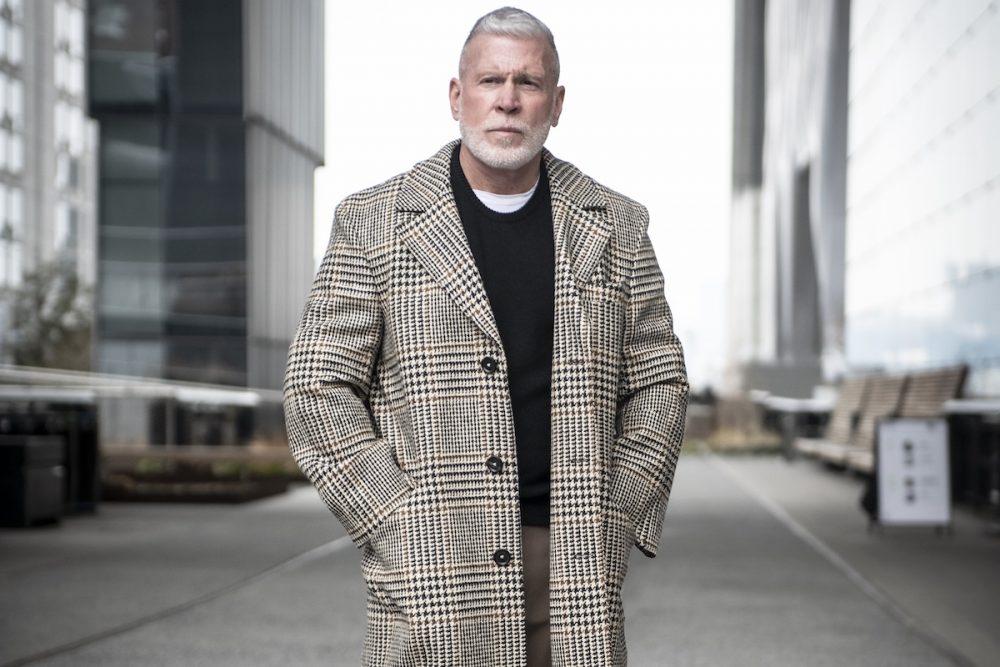
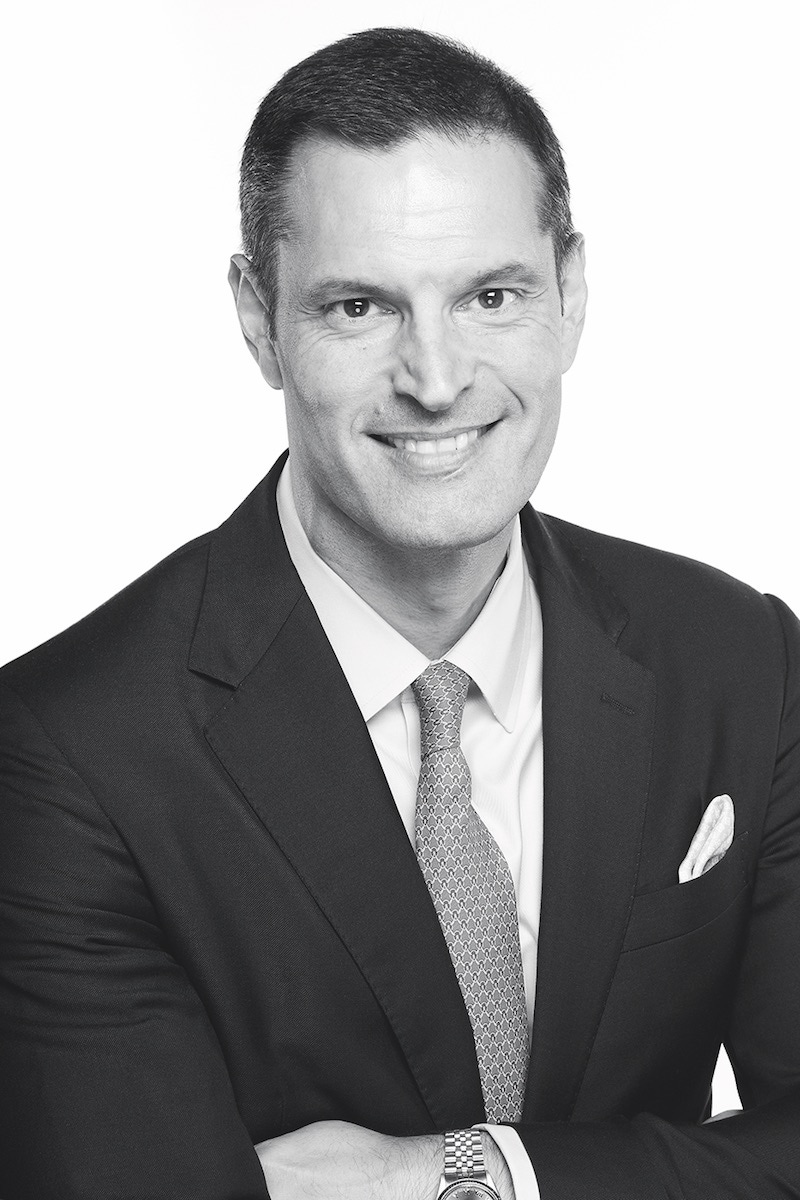
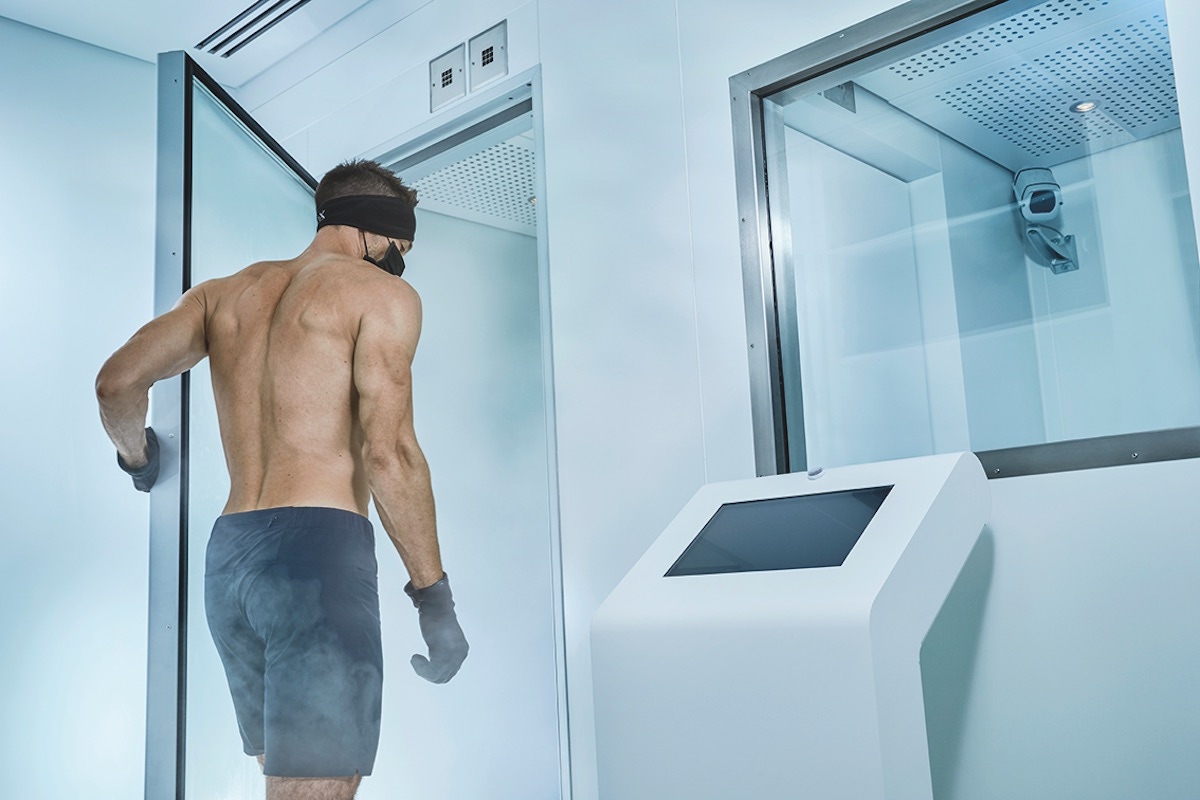
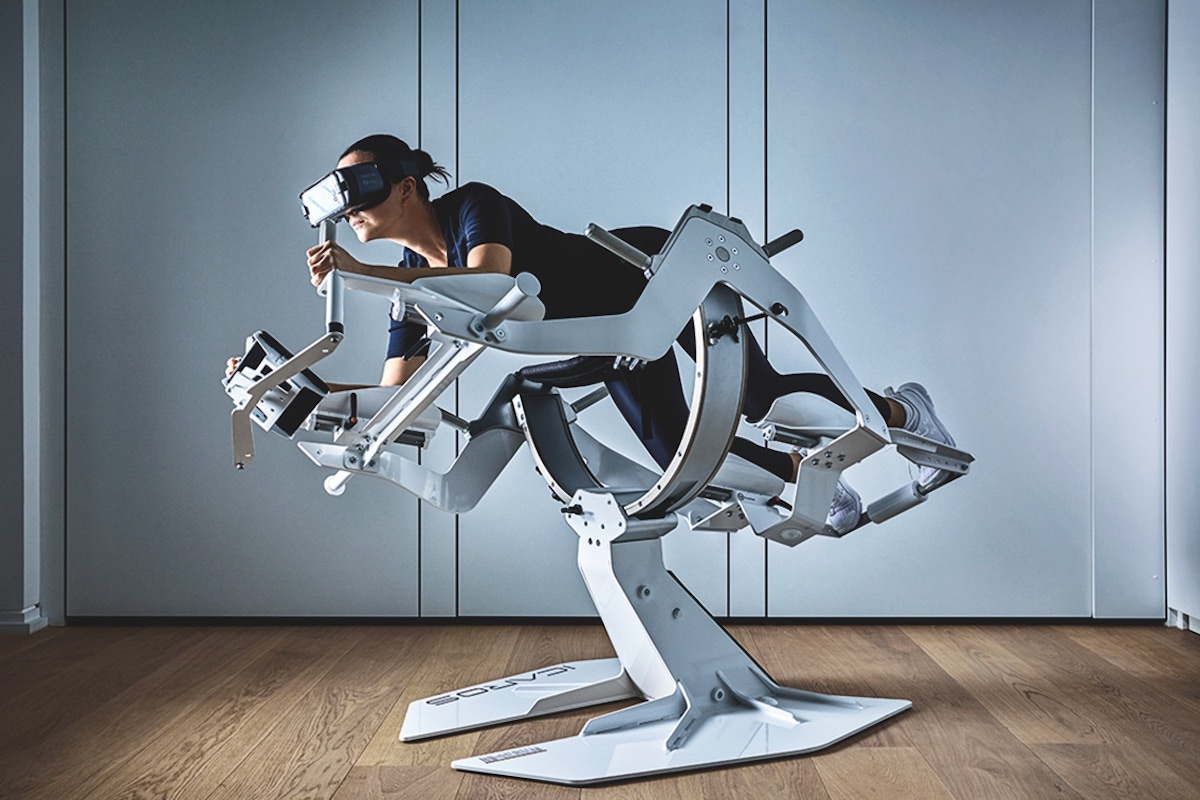
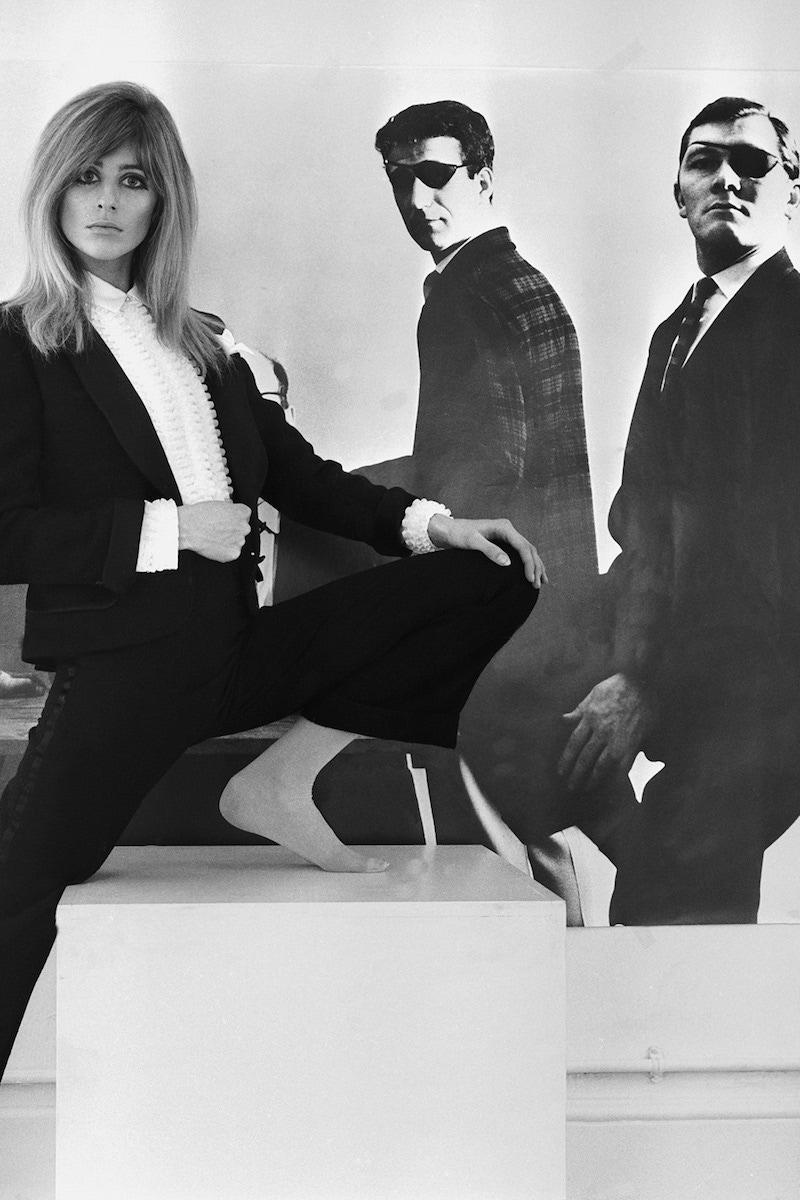

‘Bench-press an elephant’
With four practitioners of fitness and well-being all singing from the same hymn sheet, what do the medical professionals say? Dr. Iqbal Malik, a medical director of OneWelbeck Heart Health in Marylebone, warns against going straight from indolence to the kind of regimes our interviewees so far have been practising for years. “It’s never a bad time to start getting fitter, but if you try to bench-press an elephant from the outset, you’re going to break your arms,” he says. “You’ve got to work it up gradually. You’re not going to go from couch potato to Olympic squash player. Make sure you can walk, then jog, then run, then you might be able to do the more intense sports. Otherwise, being shown up by the local club squash champion is not a good look. Build up gradually, and rather than doing enormous amounts of activity once a week, do activities two or three times a week to keep the engine tuned, then try some extreme, eyeball-busting levels of exercise when you’ve been exercising regularly for a year.”
Dr. Natasha Beach, of OneWelbeck’s Orthopaedics, says that strength training at least once a week will help prevent the rubber-band-snap her colleague Malik refers to, adding that those of us of a certain vintage (those, let’s say, who can remember when the word ‘gym’ meant the stuffy-smelling room with wall-bars at the back of the school) should bear in mind key myths on the subject of late-onset fitness instincts. She says: “‘I’m too old to take up a new sport’ is untrue, as are ‘I have arthritis so I shouldn’t run’ and ‘Doing sport will make me more likely to get arthritis’. We actually prescribe exercise for patients to help reduce pain and stiffness, increase muscle strength, and improve joint mobility.”
Like Malik, Beach recommends taking it slowly (“big jumps in the amount of activity you’re doing is a common reason for developing an injury”), splashing out for the right gear (“running shoes with a gait analysis, a racket with the right grip”), and, above all, physiological self-awareness. “Listen to your body,” she says. “If you think you have an injury, ease off for a few days and see how it feels. If it persists, get it checked out.”
As Managing Director of Lanserhof at the Arts Club, and with more than 25 years’ experience in leadership roles at prestigious private members’ clubs, Mario Pederzolli knows a thing or two about the options available to new wellness warriors. And while insisting that acceptance of ageing should be the foundation of one’s approach — “The ageing process is like the tide and taxes,” he says — modern know-how means that the habit of seeking expert consultations only when our health lets us down should be consigned to history. “The pandemic has certainly focused all our minds on taking responsibility for our well-being — we’ve seen a significant shift towards proactive health screenings and preventative health,” he says. “Preventative medicine is becoming increasingly personalised — accurate diagnostics are key in creating effective and targeted bespoke programmes.”
Personalised, blood-test-based vitamin and mineral supplementation, biomechanical analysis, rehabilitation, injury prevention and sport and exercise science should all be in the mix, he says, adding that, conversely, these should be supplemented with simple day-to-day measures that anyone can introduce to their lives in a heartbeat. “Posture is a common complaint as we age — osteoporosis-related stooping or leaning forwards is often due to weakening muscles and a fear of instability,” he says. “To combat this, try to avoid sitting down too much — it truly is the new smoking! Also, how we eat is just as important as what we eat. Each bite should be savoured and chewed for at least 30 seconds. You should also leave at least four hours between meals to aid digestion, and avoid drinking anything while you are eating. It’s also a great idea to incorporate fasting into your weekly routine to encourage cell renewal and help your gut microbiome to thrive, and ensure you’re incorporating as many anti-inflammatory foods — berries, green tea, extra virgin olive oil — into your diet as possible.”
Unsurprisingly, Pederzolli’s is another voice in the chorus that advocates good mental health as a prop for solid physical health: “Stress can be a lifestyle choice. Our awareness of ourselves in our current life situation is the first step to building resilience — knowing who we are and, in particular, not comparing ourselves to others. Embracing and accepting the ageing process will also promote inner happiness. As we enter middle age, memories of our youth are heightened — our first love, our first car, our first job... This is known as the ‘reminiscence bump’. What about creating our second reminiscence bump? Leaving the job we don’t like, travelling more, breaking free of relationships that no longer work. Remember, it’s never too late for change.”
‘Age cannot wither her’
Pederzolli won’t be getting any argument from the eldest of those The Rake consulted for this treatise: 78-year-old model and photographer Jill Kennington, who appeared in Michelangelo Antonioni’s 1966 film, Blow-Up. She is someone who, in her own words, “was still charging around at 48 and still charging around at 70”, although poor health last year has (temporarily, we’re sure) slowed her down for now.
Kennington — who, in her capacity as a photographer, once collaborated on a book with the actress Harriet Walter inspired by a line from Shakespeare’s Antony and Cleopatra, “Age cannot wither her, nor custom stale her infinite variety” — is a great believer that life experience, and the empathy and existential appreciation that come with it, are the nearest thing that exists to an elixir of youth. “I’m not somebody who wants to change nature’s course,” she tells The Rake. “Look at other animals and how endearing they become as they become old — we’re the same.”
Life-enriching experiences, Kennington says — in her case the likes of photoshoots in locations (including the North Pole) only a fraction of humanity will ever visit — have given her the kind of youthful vitality that could never be found in a bottle. Then there’s the stuff closer to home: “I never really had a fitness regime, but I’ve always been a complete nature lover, and that takes me out on two big walks a day with my dogs, if I’m not on a job,” she says. “If anything is going wrong in life, a walk and some time sat on a log looking at the moss and hearing birdsong just levels you out. That’s always been my health regime. If you go out in the morning and there’s dew on the ground, and you put your hands in it, put the dew on your face, breathe in, look at the trees — it’s gorgeous. It’s meditation and mindfulness, years before those things were so popular in the west.”
Given the clear synergy between health and happiness, the exchanging of one’s soul for youth — so common a theme in literature — is clearly a self-defeating approach.
You can also view this feature in Issue 75 of The Rake - on newsstands worldwide now.
Available to buy immediately now on TheRake.com as single issue, 12 month subscription or 24 month subscription.
Subscribers, please allow up to 3 weeks to receive your magazine.
Our customer service team can assist with any subscription enquiries at shop@therakemagazine.com.

